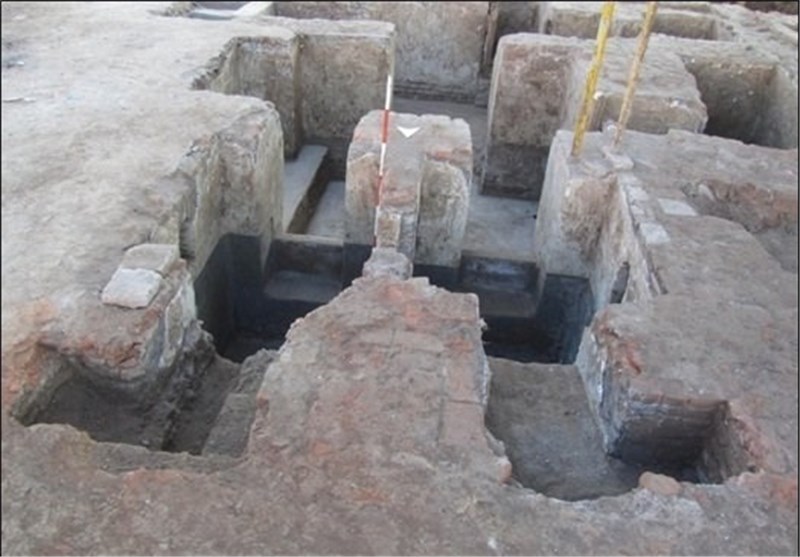Earth removal prior to the construction of a multilevel car parking in Qazvin’s old town has led to the discovery of the remains of a stately home, IRNA quoted head of the exploration team on the site, Kazem Arab as saying.
Adjoining a typical Qajar bath-house and a store room, the house is located in precincts of Sa’d-ol-Saltane historical Caravanserai, the trade center of the city.
The recovery work started with 12 test trenches covering an area of 350 sq meters, running 3.5 meters deep. Most trenches led archaeologists to some historical remains. However, the two trenches of 104 and 105 unearthed the most valuable structures.
Trench 104 led to discovery of two architectural spaces, one of which was part of a basement belonging to a mansion built around a central courtyard. The paved area included food-storage, alcove, niche, and entrance, all indicating that the house once bustled with people.
The basement is divided from an indoor washroom by an adjoining wall. The bath-house follows the architecture style of the Qajar and early Pahlavi period, but on a smaller scale. It contains a hot pool, cold pool, heating room, change room, mid door, corridors, and underground conduits.
Trench 105 ran down to 9 meters below ground level, until it touched the intact natural soil. Five settlement strata were revealed: modern, second Pahlavi, first Pahlavi, late Qajar, and mid Qajar.
A considerable number of earthen wares were found in the trench, including blue potteries, Safavid and Qajar potteries, luster ceramics, and azure potteries.
Among the earthen artifacts, there is a terracotta inscription in Kufic script of ‘Moshajjar’ style. The inscription, which is considered the most significant finding of the trench, has been molded to its present shape. It has similarities to the inscription installed in Qazvin Masjid Jame, located in southern part of the city, with the oldest part constructed in 807 AD.
Trench 112 ran across the central courtyard. A 25-dinar coin, having been minted in Tehran, was found in the trench.
Based on the architecture style, the site is estimated to date back to mid and late Qajar era, sometime between 1800 and 1900 AD, but the discovered potteries tell a different, older story.
The archaeology team has successfully identified the urban characteristics of the site, and traced up the links that connected the historical structures to urban layout.


